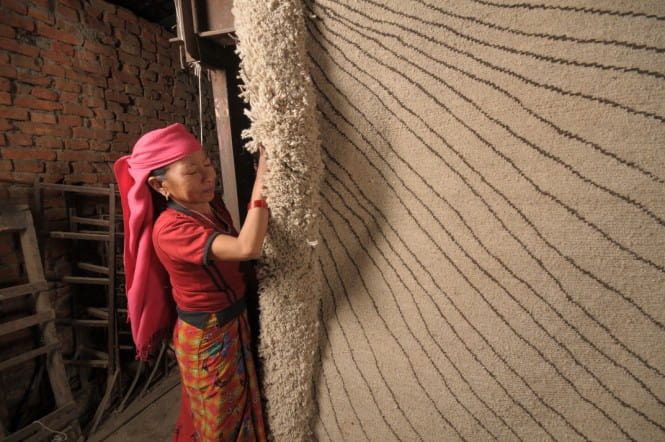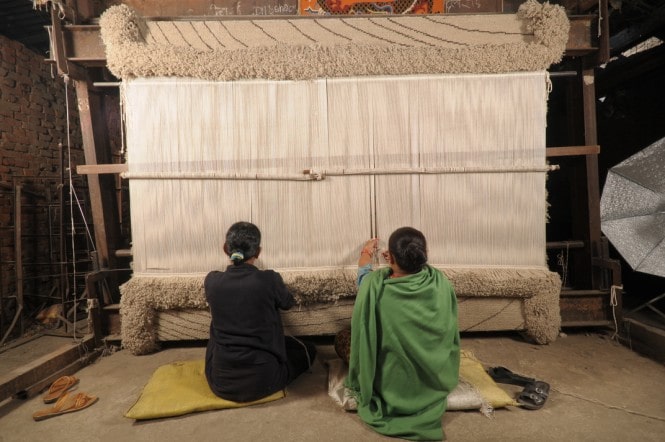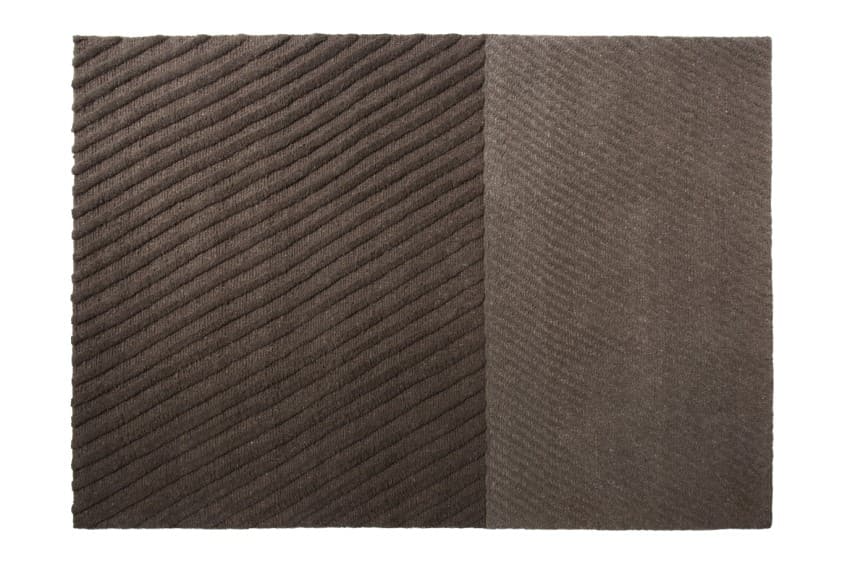Himalayan rugs: how are they made and why are they so successful?
Design — Materials and techniques — Sep 08.2022
Himalayan rugs are among the finest of all rugs produced in the East. The very high quality of these artefacts is partly due to the use of fine wool yarns and partly due to the workmanship done by Tibetan craftsmen, who have considerable experience that has been handed down from father to son.
Himalayan carpets are especially appreciated for their softness and great durability. Traditional as well as contemporary designs can furnish the most classic homes as well as those with modern and contemporary furnishings.
What distinguishes Himalayan rugs from other luxury carpets?
When we speak of traditional Himalayan rugs, we are referring to carpet models produced since the 1960s, when, following the invasion of Tibet by China, many locals were forced to move to Nepal, on the slopes of the Himalayan mountain range.
Here, the Tibetan exiles brought not only their possessions, but also their knowledge of carpet making. Using the wool of the animals that lived on the local plateaus, they went on to create their beautiful carpets, ideal for everyday use, to protect against the cold, and to decorate rooms in the home.
In the production of Himalayan carpets, a specific knot is used, resulting in a very tightly woven carpet. The high density of knots per square metre means that richly detailed designs can be created and also ensures a long life of the artefact.
The most unique aspect of Himalayan rugs is probably the quality of the materials used in the production of these magnificent pieces of furniture. For the warp, mainly wool, cotton and jute are used, all materials that guarantee solidity and strength. For the pile, on the other hand, wool is used in most cases. The resulting yarn is extremely soft and has exceptional moisture resistance due to its high lanolin content. For the finest carpets, a mixture of wool and silk is often used, which makes the surface of the carpet shiny and almost velvety.

What are the typical patterns of Himalayan rugs?
The Himalayan carpets produced in the handicraft workshops of Nepal are characterised by the use of bright colours and distinctive traditional patterns. The wool and silk yarns used to create the carpets are dyed by hand, using mainly vegetable pigments.
Classic Himalayan rugs are knotted by hand, on a vertical loom, and as the knotting progresses, the pattern is composed, usually representing floral or geometric motifs. In carpets with floral patterns, the flowers common in Asia, such as lotuses and peonies, are used, while in carpets with geometric patterns, stripes and checks are the most common shapes. Pieces representing tigers and dragons, which are symbols of strength and power, are also quite common.
In addition to hand-knotted carpets, kilim-type carpets are also part of the Himalayan and Tibetan tradition. The latter are models of Himalayan carpets that are mainly used for decorative purposes and often feature simple striped patterns.

How to make different spaces in the home unique with a Himalayan carpet?
Thanks to the use of high-quality and very durable wool, Himalayan rugs are perfect for the busiest rooms in the home. For example, a small rug can be placed in the entrance area or a large one can be placed in the centre of the living room.
Himalayan rugs are not only very robust and wear-resistant. In fact, thanks to the compactness of the fibres, which is guaranteed by the special processing, they are little prone to staining and soiling. The required maintenance is minimal and, even in those areas of the house where they are vacuumed several times a day, regular vacuuming is sufficient to have a carpet that is always in perfect condition.
The high lanolin content also makes the wool rather waterproof. This means that a Himalayan carpet can also be placed in spaces in the home that are somewhat unusual for a handmade product, such as the kitchen and bathroom, because there is no fear of damaging it.
The comfort and warmth provided by Himalayan carpets are perfect for furnishing bedrooms. The softness of the wool is like a caress and is very pleasant, even when walking on the carpet barefoot.
The bright colours used for the more traditional Himalayan rugs, such as orange and yellow, fit perfectly into settings with classic furniture, vintage or designer pieces and contemporary settings. Those who love contemporary style can also turn to Himalaya carpets, which are modern carpet lines produced in Nepal by applying traditional manufacturing techniques and adapting the shapes and patterns to current aesthetic taste.
Nodus creates prestigious rugs.
Bring luxury into your home!
>>> CONTACT US! <<<
![]() Nodus has reinvented the luxury rug. It was in fact the first brand to propose the concept of the rug as a work of contemporary art.
Nodus has reinvented the luxury rug. It was in fact the first brand to propose the concept of the rug as a work of contemporary art.
Nodus has always created exclusive products that furnish the most beautiful homes in the world. Do you want to make your home inimitable as a work of art?
Bring a hand knotted rug of the highest quality and design into the spaces of your daily life! Give your family and the people you love the beauty of a dream masterpiece! Every piece of Nodus is designed by famous Designers, making it recognisable and prestigious. In this way, each rug is unique: you will not find another one like it. Like all beautiful and unrepeatable things, one piece in the Nodus collection sets you apart and speaks to others about your taste and elegance. CONTACT US!